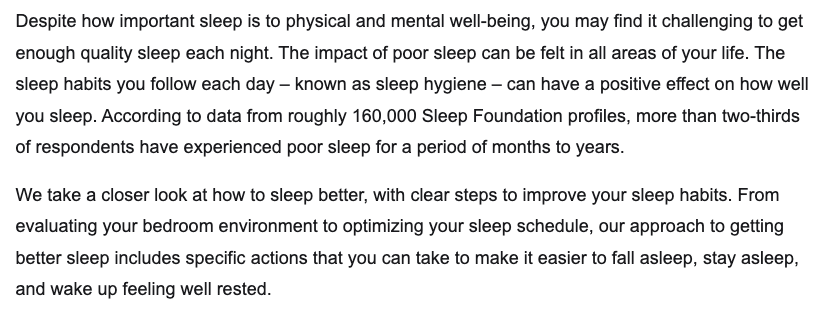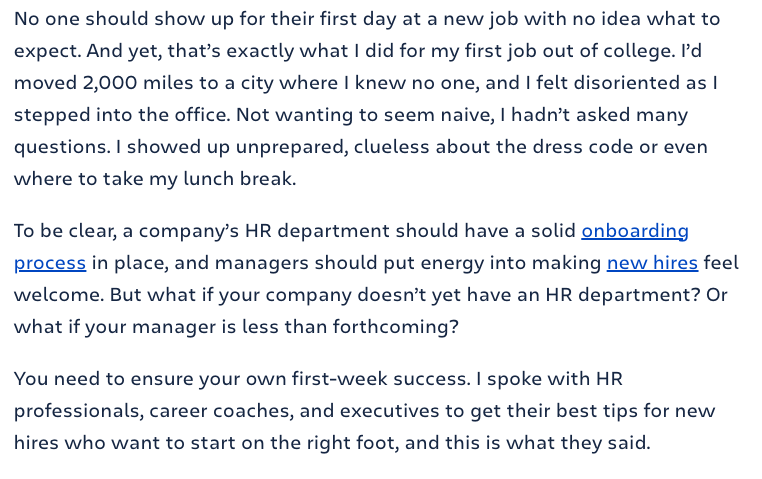
7 Must-Haves for an Engaging Blog Introduction
“Ladies and gentlemen, the moment you’ve been waiting for…” – is this the wrong kind of blog introduction? Not necessarily, as you’ll see.
You work long and hard to write a blog post, but that effort will be wasted if no one reads beyond its introduction. Here are our seven magnificent tips for writing that all-important opener to hook your readers and keep them reading to the end.
What Is the Purpose of an Introduction?
First, let’s take a quick look at the point of the opening section of a blog article. A good introduction can make all the difference in engaging your reader. Those initial few sentences immediately following the title are your golden opportunity to captivate attention and persuade readers to stick around. But it’s not just about making a strong first impression; it’s also about setting clear expectations.
In essence, the introduction acts as a roadmap for the rest of the post. It should give readers a reason to care by stating exactly what value they’ll gain from reading on – whether it’s a practical solution, expert insight, or a fresh perspective. Done well, it aligns your reader’s needs with your post’s promise, creating both curiosity and trust.
By clearly and succinctly outlining the post’s purpose, you signal that their time will be well spent. That’s the key to encouraging them to scroll past the fold and keep reading all the way to the end.
How to Write a Blog Introduction
You could, of course, simply introduce your blog post with “This is my post about…” But a good introduction will need something more than that. These are our top tips.
1. Know Your Audience
Who are you hoping will read your post? Try putting yourself in their shoes and consider what would make you want to keep reading. If you’re not familiar with the target audience, do some research.
2. Find a First Sentence Hook
It works for films – “Just when you thought it was safe to go back in the water…” (Jaws 2, 1978) – so why not for blog posts? Think of your opening sentence as the hook for your post: Get that right, and you can start reeling in your reader. Try starting with a quote, a question, or an interesting statistic, or, having gotten to know your audience, you could employ some crafty psychology – “Don’t read this if you’re afraid of hard work!”
3. Identify – and Identify with – the Problem
Why should anyone read your post? Your reader will likely be looking for a solution to a problem, so identifying that in your introduction will clarify that they’re in the right place. No one likes to feel they’re alone in finding something tricky. In your introduction, show that you empathize with the problem. Even better, show that you have experienced it. Then you will create a bond with your reader that will keep them reading.
4. Offer the Solution
How will your reader benefit from your post? It’s one thing to show that you understand the problem, but your reader will only read to the end with the promise of a solution. So, make sure to set out in your introduction that a solution will be given.
5. Explain the Benefit
What will your reader gain from reading to the end? Your reader may already be sold on getting a solution to their problem from a source who understands and has experienced it. But if you can hint at how this solution may further benefit them, so much the better.
6. Keep It Simple
Your introduction will set the tone for the post. Remember that your reader will want a quick and easy read, not War and Peace. You will quickly put off a time-poor reader with a long, convoluted introduction. Instead, restrict your opener to a few short sentences and make each one count. Go back over the above points and cut out anything that isn’t necessary.
7. Check It Relates – or Write It Last
There’s nothing worse, as a reader, than being enticed to read a post only to get to the end and find that the introduction gave a false impression of what was to come. Avoid misleading introductions by checking them after you’ve written the full post.
Alternatively, you could crack on and write the post first and save writing the introduction to last. That way, you may have just the inspiration you need.
Blog Introduction Examples
Now that we’ve set out our tips, let’s look at how they come together in practice with some real-life examples.
Knowing Your Audience
The best introductions speak directly to a clearly defined group. Consider this example from a post on fueling strategies for trail runners:

This introduction uses familiar touchpoints that only someone immersed in the sport would relate to. It assumes knowledge, celebrates shared experiences, and frames nutrition not as a generic fitness concern but as a crucial part of race-day culture. That insider perspective builds rapport with readers and shows them they’re in the right place.
Using a First Sentence Hook
Hooks grab attention and spark curiosity, often with a quote, question, or surprising fact. Here’s an example of leading with a compelling statistic from a post about reader engagement on blog posts:

It’s a simple stat that points to a challenge many bloggers face – getting readers to interact. For anyone who’s poured time into blogging and feels like their posts disappear into the void, this speaks directly to their experience. It raises a quiet but pressing question: “How do I get more engagement?” That curiosity is what keeps the reader scrolling.
Identifying with the Problem
The most engaging introductions are often the most personal. Consider this example from a blog post about coping with anxiety:

The writer immediately identifies a common challenge – overwhelming anxiety – and shares their experience of it. That vulnerability builds trust with readers, signaling, “You’re not alone – I’ve been there too.” This kind of personal storytelling helps readers feel understood and keeps them reading to learn how the writer found a way forward.
Offering the Solution
Once you’ve acknowledged the problem, the next step is to reassure your reader that help is at hand. Consider this example from a post on how to get better sleep:

After outlining the widespread struggle with poor sleep, the writer immediately offers a clear and practical solution. They promise not just general advice but “specific actions” tailored to common sleep challenges. This sets a helpful tone and gives the reader a reason to continue, knowing they’ll leave with tangible strategies they can start using right away.
Explaining the Benefit
Once readers know you’re offering a solution, the next step is to show them why it’s worth their time. Consider this example from a post about succeeding in your first week at a new job:

After sharing a relatable personal experience and identifying a common workplace challenge, the writer makes a clear promise: You’ll walk away with expert-backed tips to help you thrive in your new role. This line not only signals that a solution is coming, but it also highlights the benefit of continuing to read: starting your job with confidence, clarity, and momentum.
Keeping It Simple
Introductions don’t need to be long to be effective. A few well-chosen lines can quickly grab the reader’s interest and set the tone. Here’s an example from a post on growing your own food:

In just three sentences, this introduction captures the joy of homegrown food, connects emotionally with the reader, and clearly sets up what the article offers – 10 simple steps to get started. The language is warm, direct, and jargon-free, making the topic feel accessible even to total beginners. It’s proof that an engaging intro doesn’t need to be complicated to be compelling.
Becoming a Freelance Writer
Now that you know what makes for a good blog introduction – and why it’s essential to have one – it’s time to work on yours. Remember our top tips, and you should be well on your way to engaging your readers from the opening line.
Of course, paying attention to the rest of your blog post is still important. Poor writing can be just as much of a turnoff for a reader facing a wealth of online content. If you want to brush up on your writing skills, our Becoming A Freelance Writer course covers everything you need to know to write professional blog posts and articles, including how to structure your writing. You can even try two lessons out for free.





Your email address will not be published.